DISTAL END BENDING (CINCH BACK)
Bendistal Pliers were named after their original function of bending distal ends of the unbendable super elastic archwires. Before these pliers introduction bending super elastic wires was impossible without annealing them which ruins their elasticity, and defeats the purpose of their use.
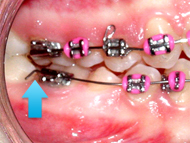
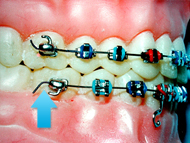
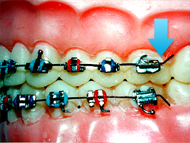
The arrows point at the cinch-back bends that can be inserted intra orally in distal ends of NiTi archwires any mouth quadrant by bendistal Pliers.
MOLAR TIP BACK BEND
V-Bends are inserted before molar teeth in NiTi archwires, for molar tip back and anchorage functions. Orientation of the V-Bends are inserted with the tip of the V is always directed occlusally in both dental arches and in all four mouth quadrants. Clinical uses of such bends are:
1. Regaining space for eruption of impacted second premolars.
2. Strengthen posterior teeth anchorage.
3. Finalize correction of the molar relations.
Reversing the tip of the V-bend orientation produce reversed effect to the above mentioned clinical effects.
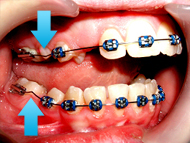
Molar tip back bends to regain spaces for both second premolars eruption
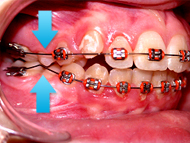
Same patient after treatment and second premolars eruption
INTRUSION OF ANTERIOR TEETH AND OPENING DEEP OVERBITES
Intrusion of incisors segments to open severe over bites has long been a challenging task orthodontists face to achieve; requiring time consuming fabrication of helices, loops and springs in the old stainless steel wires to apply their forces in vertical planes. The best bend locations of the V-bends in NiTi archwires for intrusion purpose are behind canine brackets with the V apex is pointed occlusally always. On the other hand, inverting the V-bend will extrude teeth and for (closing open bites if indicated). These one-second V-Bends inserted by Bendistal Pliers on super elastic wires, apply their lightest and most consistent forces in all planes on teeth, and extend teeth intrusion up to their 100% spring back range.
This intrusion effect constitutes the central core of the V-Bend technique accomplishment. Pioneering the use of this technique in his office, Dr. Khouri recruited anterior teeth segments simple intrusion in simplifying correction of severe overbites.
Following are intra oral photos of two patients exhibiting complicated overbite situations that were effectively and easily treated with V-Bend technique:
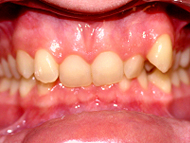
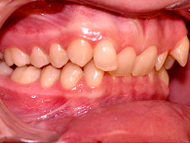
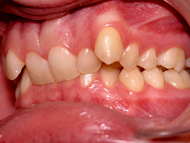
Severe overbite in a class II division 2 patient before treatment
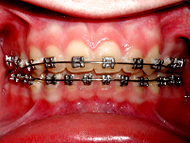
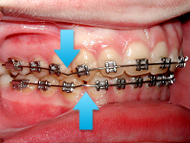
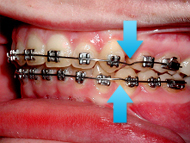
Same patient during treatment. Note the intrusive V-Bends (arrows) behind canine brackets on upper and lower arch wires
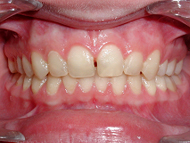
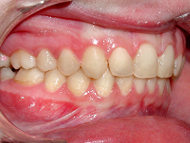
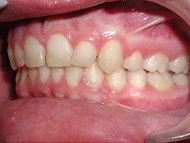
Same patient treated with the V-Bend technique of the Bendistal Pliers with one premolar extraction
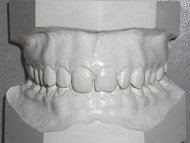
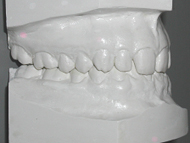
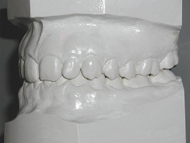
Models of severe 95% overbite in a class I adult patients before treatment
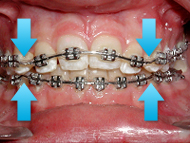
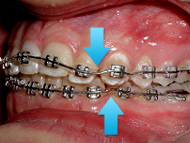
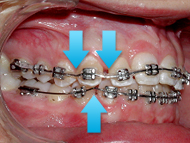
Intra oral photos showing same patient after opening the bite during treatment. Note how the V-Bends adjustments (arrows) opened that sever overbite with the simple V-Bend technique of the Bendistal Pliers
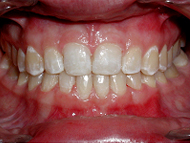
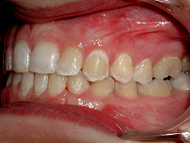
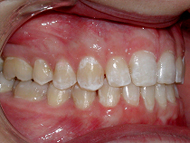
Same patient after the dramatic deep bite opening using the simple, but effective V-Bend technique of Bendistal Pliers
NON-SURGICAL CORRECTION OF CLASS III MALOCCLUSION
Since the V-Bend technique has showed unprecedented efficiency in correcting skeletal, as well as dental, severe overbite mentioned above. Dr. Khouri applied the same light intrusive mechanics to intrude maxillary and mandibular anterior teeth to disengage them and facilitate mandibular incisors retraction and the nonsurgical correction of class III malocclusions. After the incisors disengagement stage, orthodontists can plan providing the necessary spaces in the mandibular dental arch to retract lower incisors into, and achieve normal over bite / over jet relations.
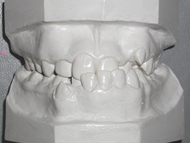
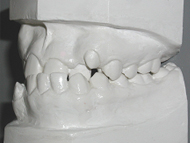
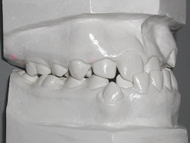
Pretreatment models of class III patient showing complicated incisals interlocking cross bite
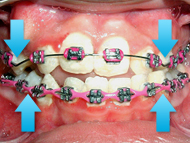
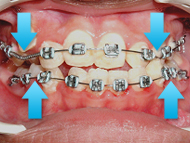
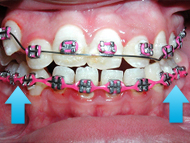
Frontal intra oral views showing incisors disengagement stage with V-Bend technique
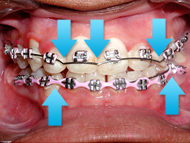
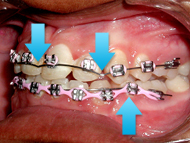
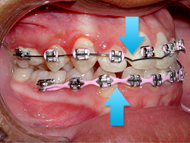
Advanced stage in treatment showing selective locations of V-Bends (arrows) that disengage teeth where needed
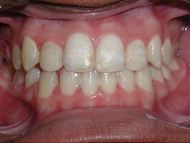
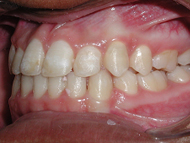
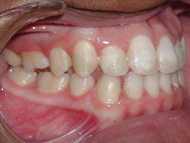
Post treatment results after 4-bicuspid extractions using V-Bend technique of Bendistal Pliers
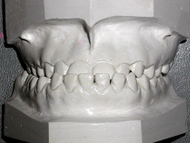
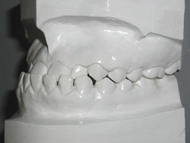
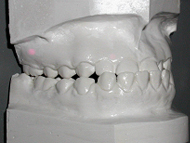
Pretreatment models of adult class III patient with unilateral posterior cross bite
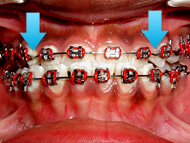
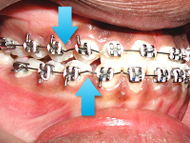
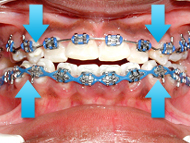
Stages of treatment using V-Bend technique. Note how you can over disengage incisors using the upper and lower intrusive V-Bends (arrows), and how only existing spaces were use to retract mandibular incisors without extraction
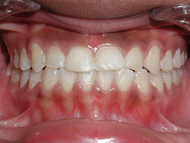
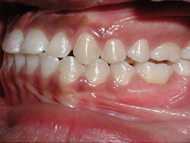
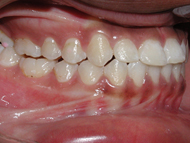
Post treatment photos of the same patient using the routine adjustment of V-Bend technique